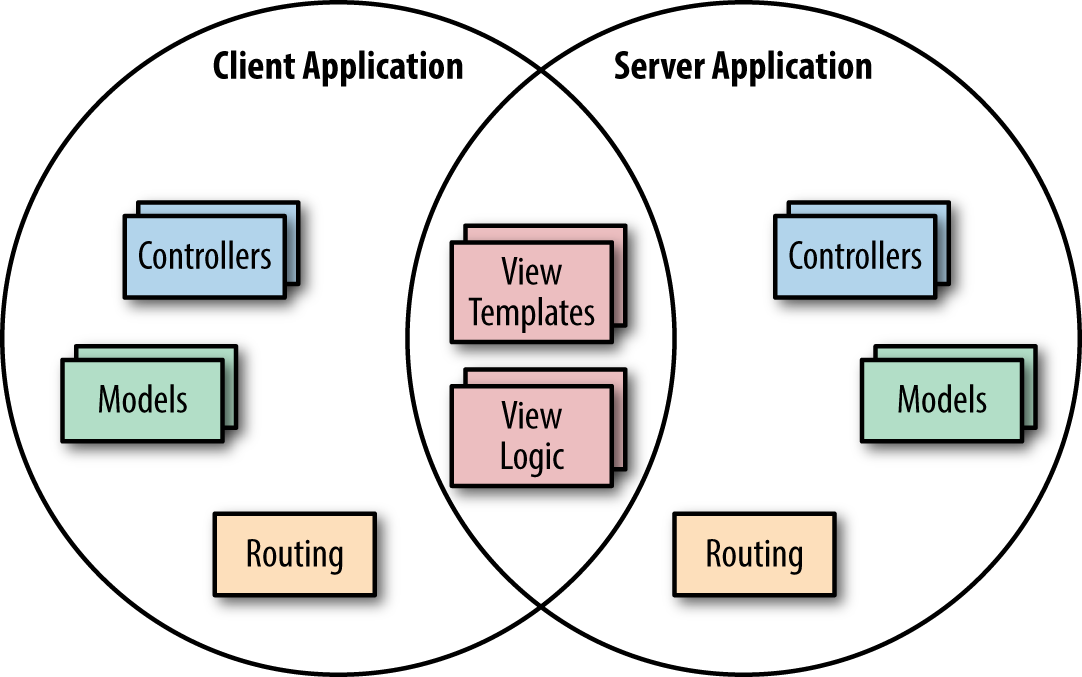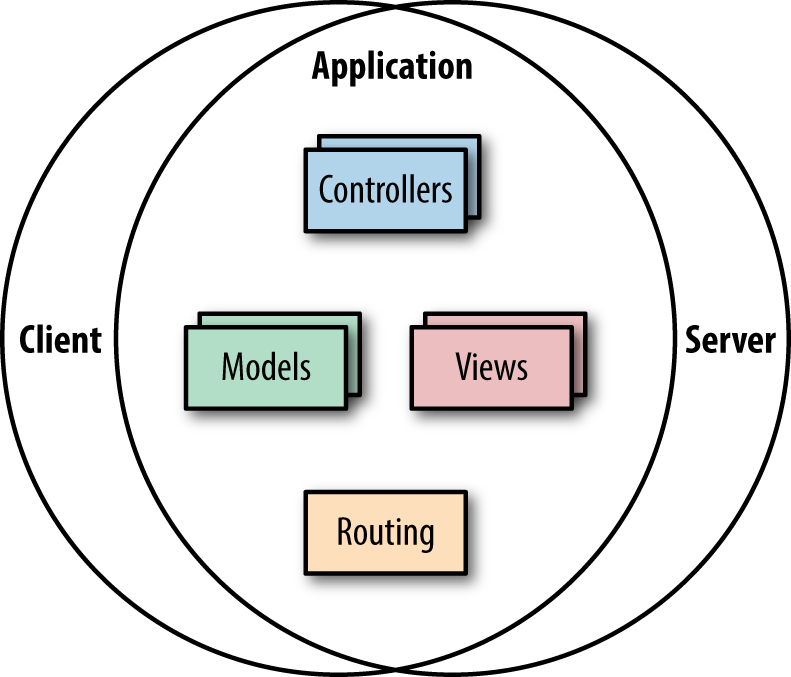Chapter 2. Isomorphic JavaScript as a Spectrum
Isomorphic JavaScript is a spectrum (Figure 2-1). On one side of the spectrum, the client and server share minimal bits of view rendering (like Handlebars.js templates); some name, date, or URL formatting code; or some parts of the application logic. At this end of the spectrum we mostly find a shared client and server view layer with shared templates and helper functions (Figure 2-2). These applications require fewer abstractions, since many useful libraries found in popular JavaScript libraries like Underscore.js or Lodash.js can be shared between the client and the server.

Figure 2-1. Isomorphic JavaScript as a spectrum
On the other side of this spectrum, the client and server share the entire application (Figure 2-3). This includes sharing the entire view layer, application flows, user access constraints, form validations, routing logic, models, and states. These applications require more abstractions since the client code is executing in the context of the DOM (document object model) and window, whereas the server works in the context of a request/response object.

Figure 2-2. Sharing the view layer

Figure 2-3. ...
Get Building Isomorphic JavaScript Apps now with the O’Reilly learning platform.
O’Reilly members experience books, live events, courses curated by job role, and more from O’Reilly and nearly 200 top publishers.

